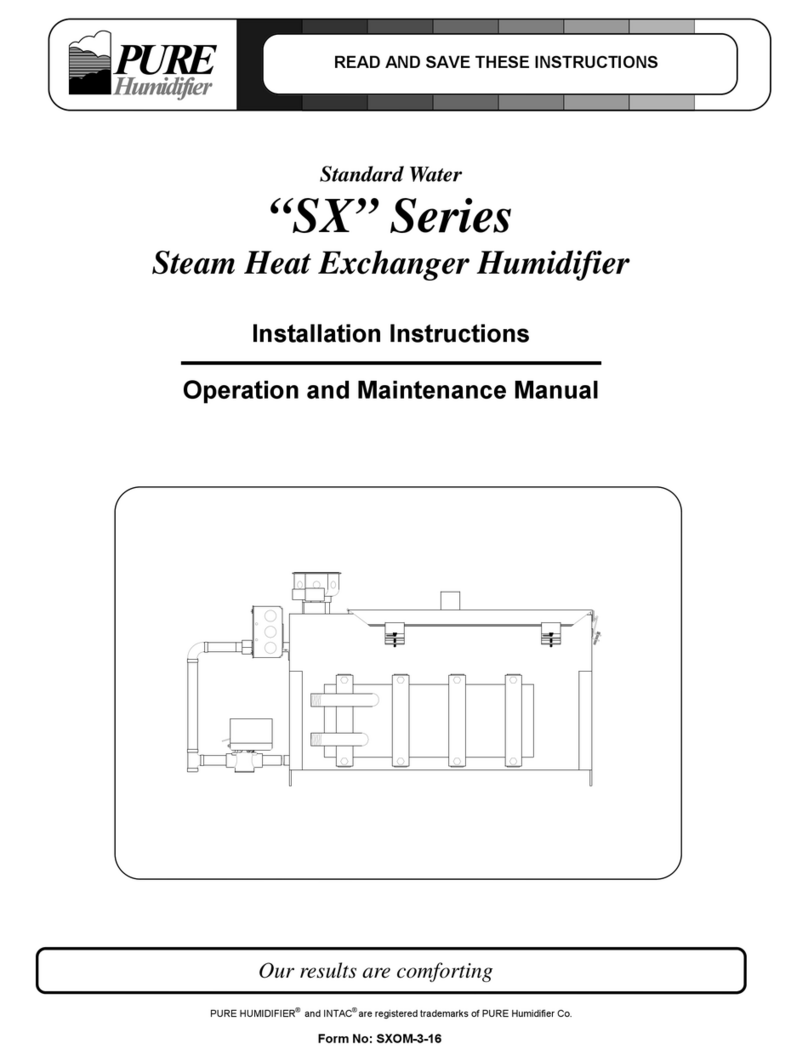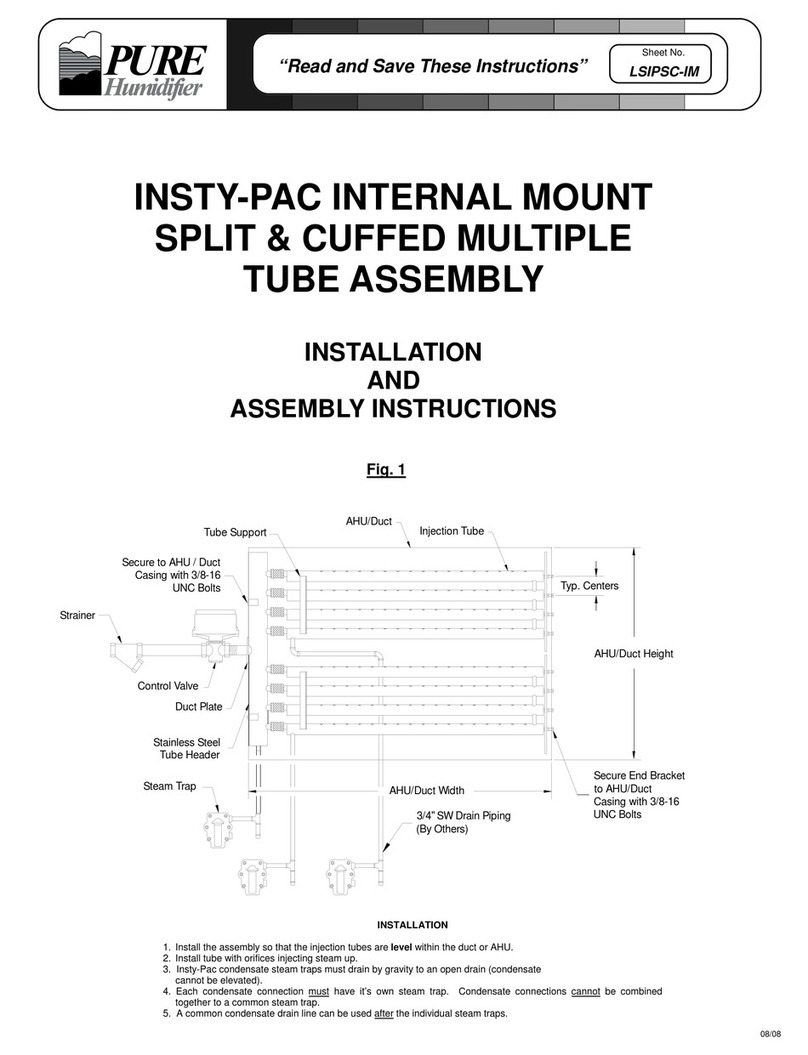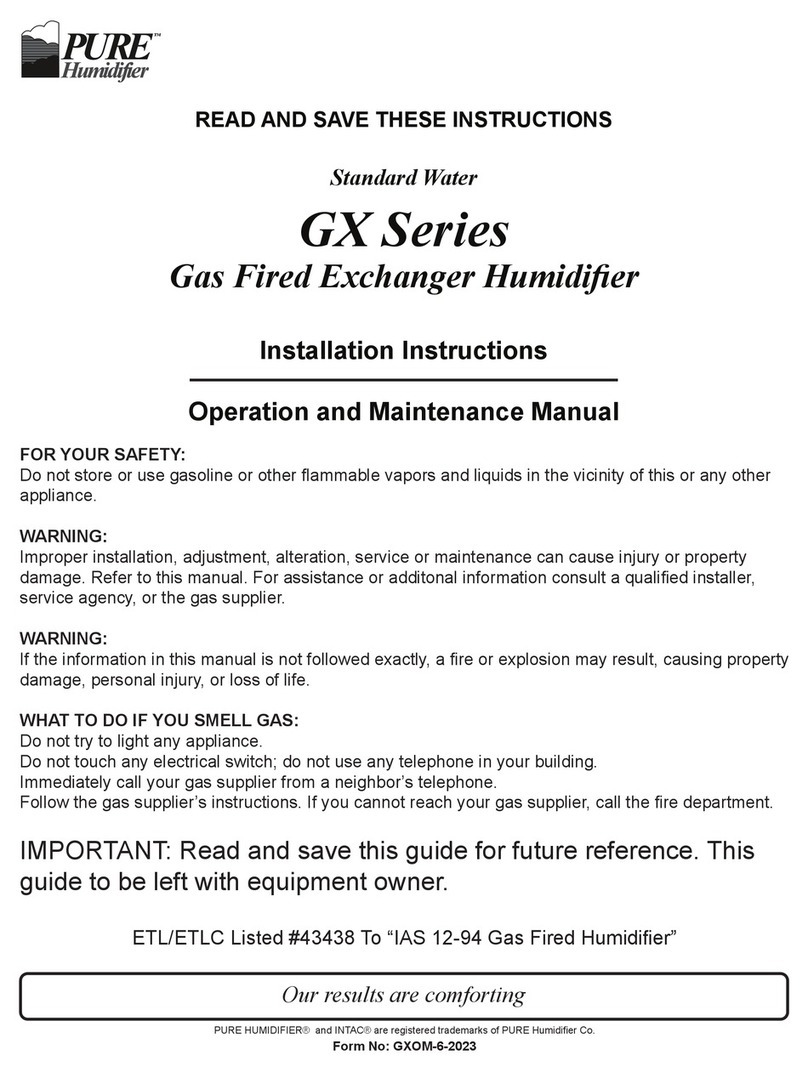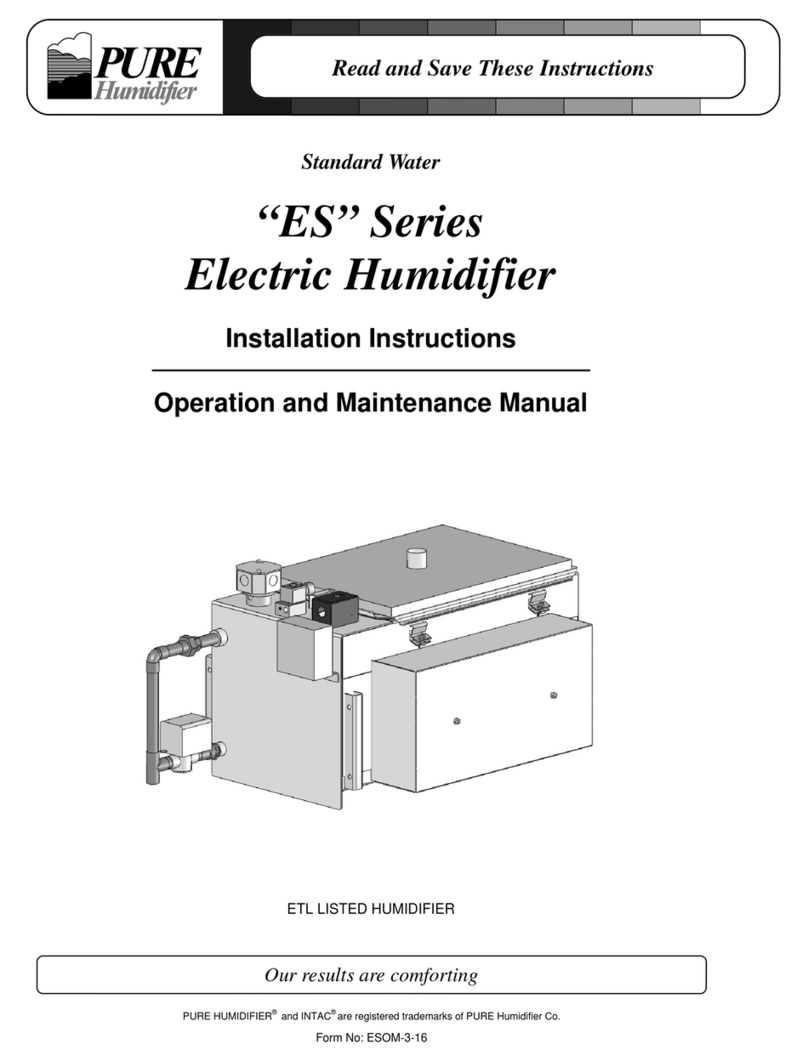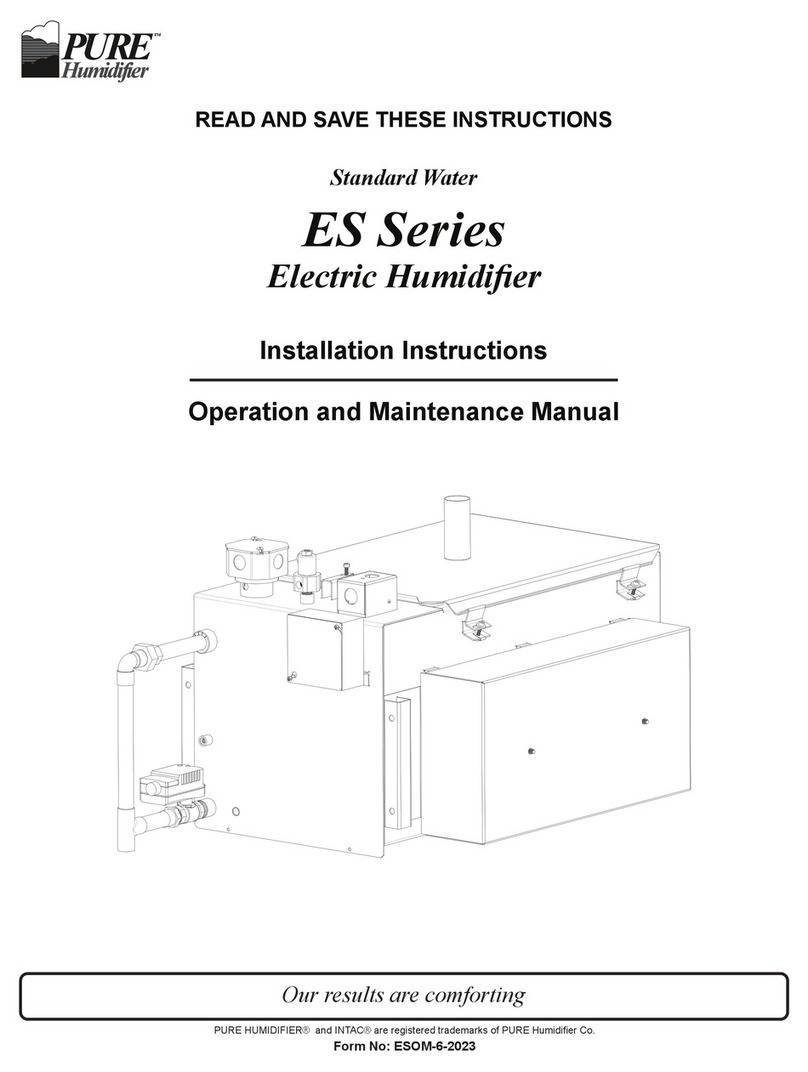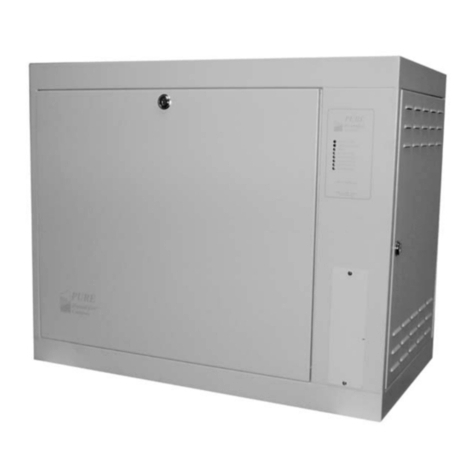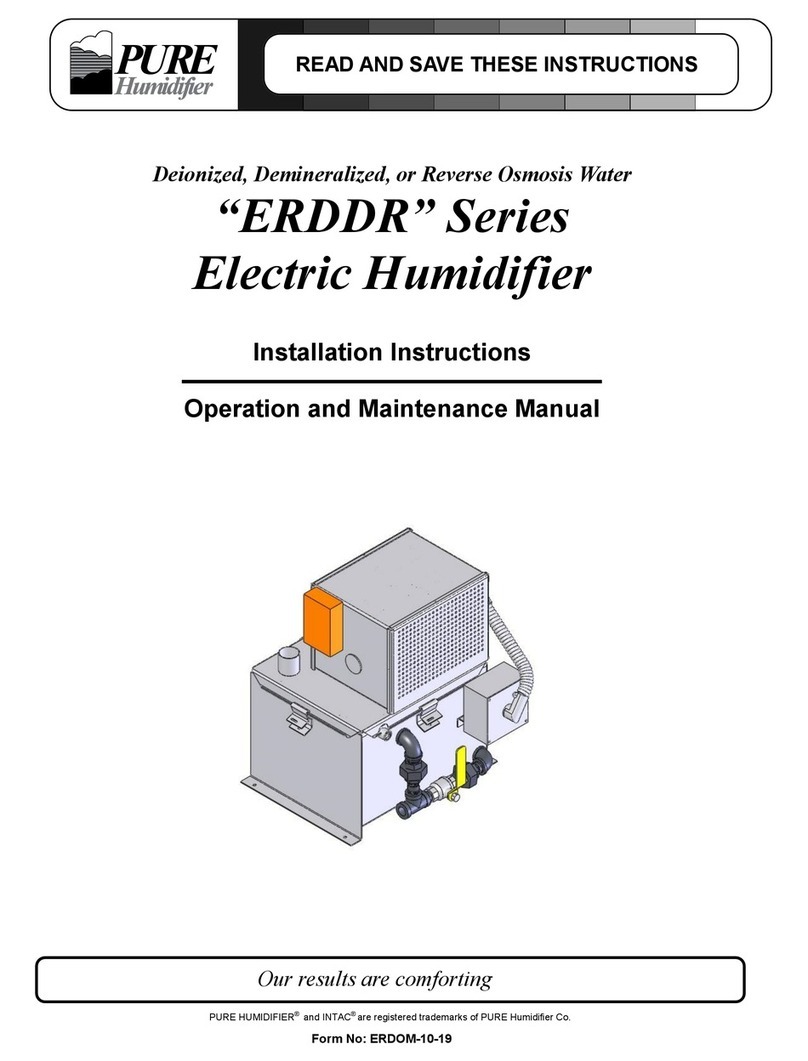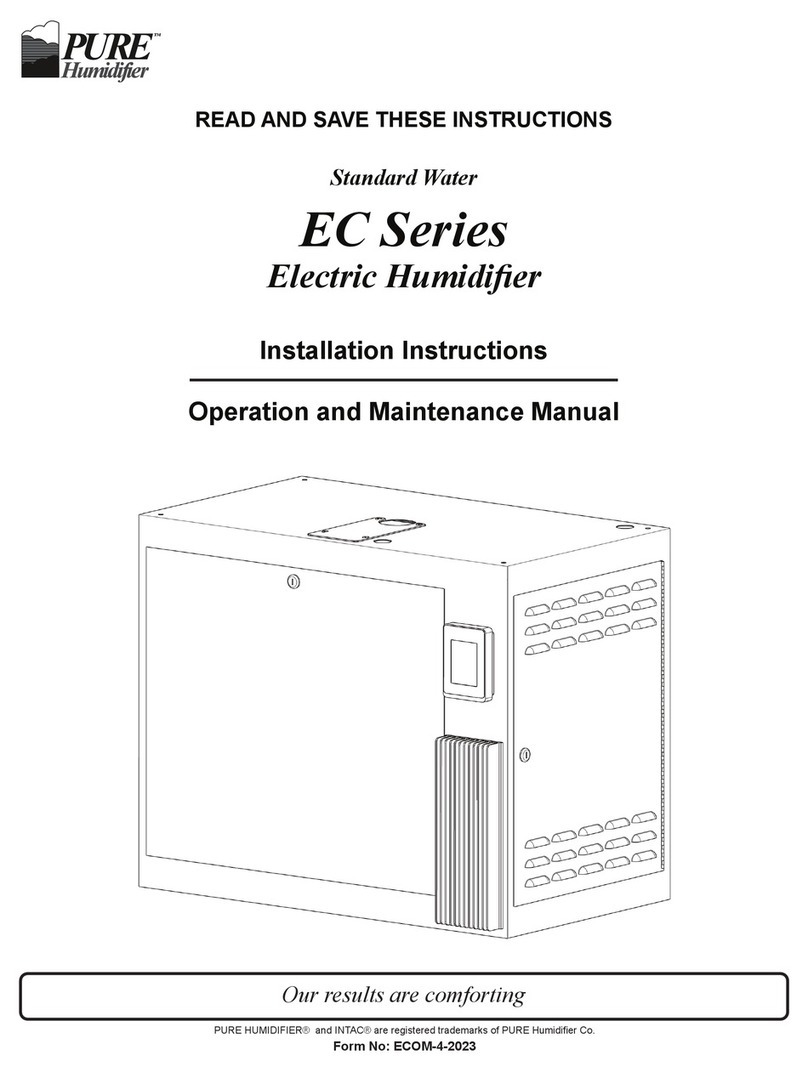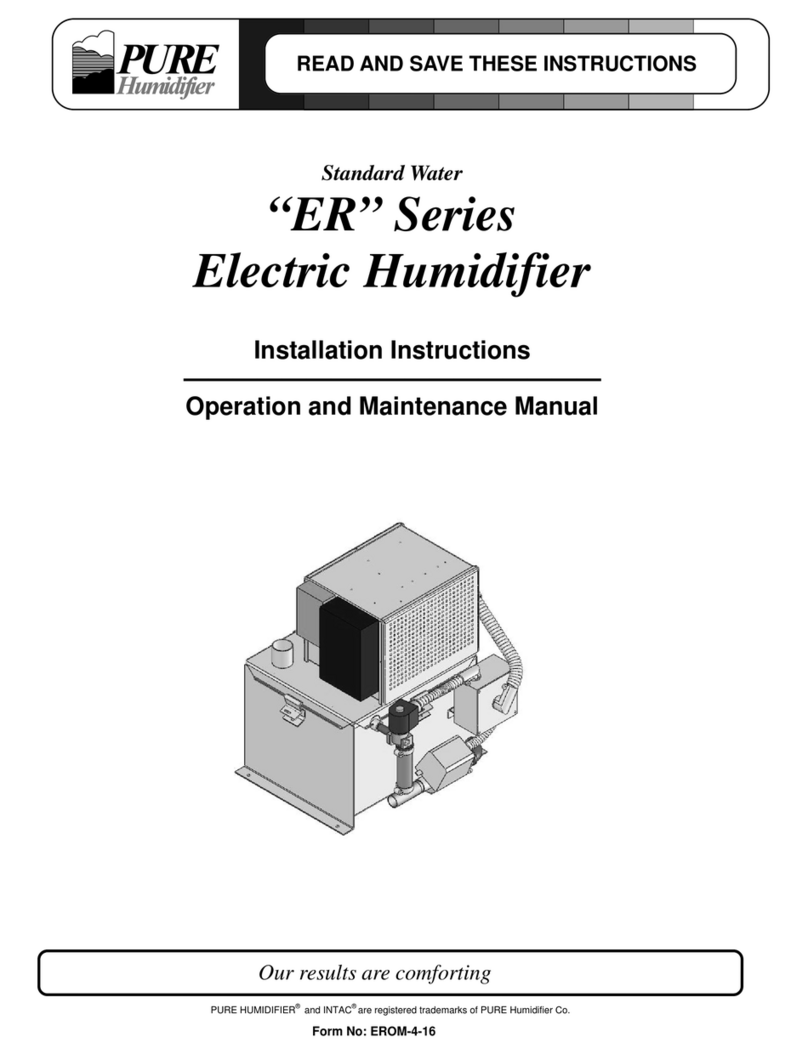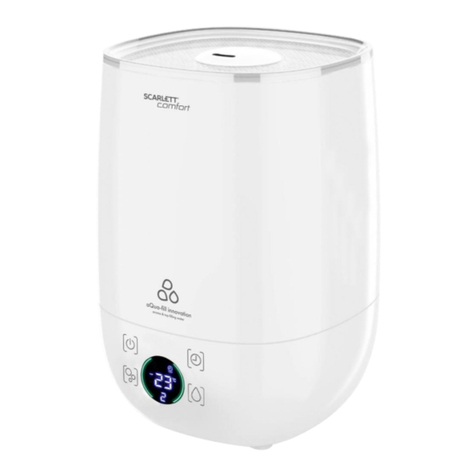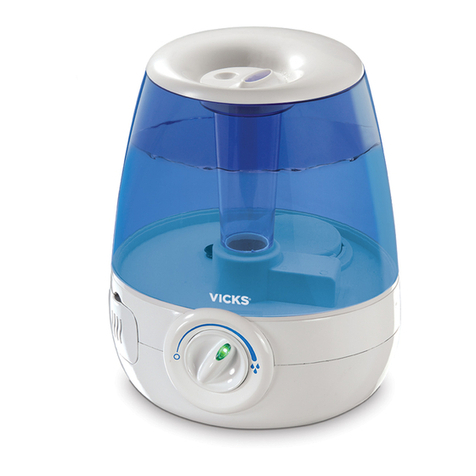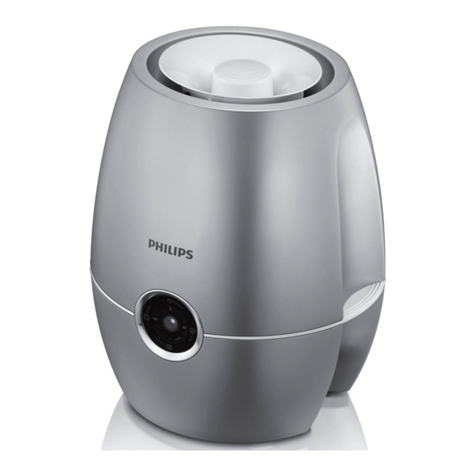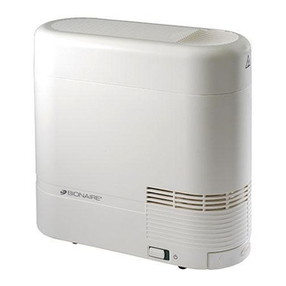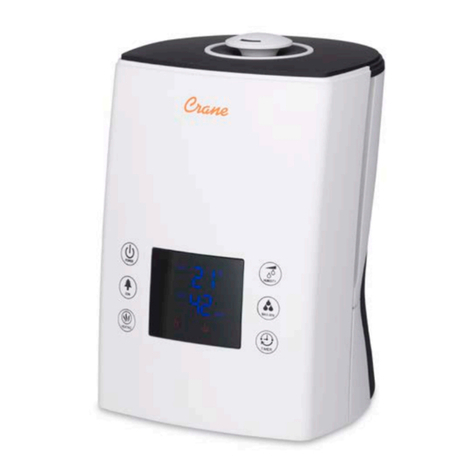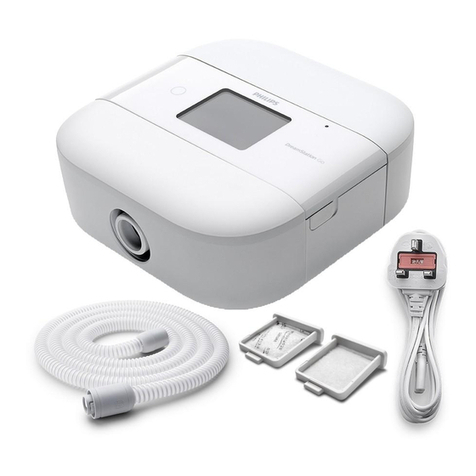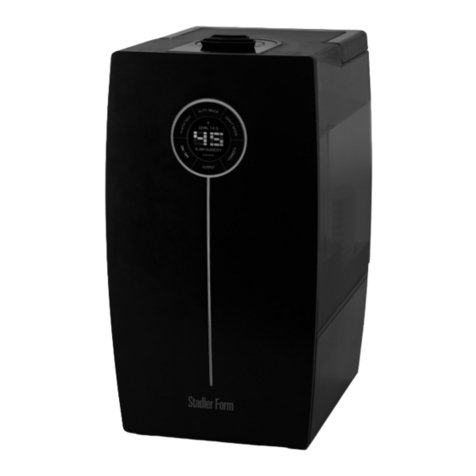5
Location
The location selected must provide for electrical service,
cold or hot water supply, and sanitary drain.
When selecting a location, try to keep the humidifier
within 10 feet (305 cm) of the duct to avoid unnecessary
heat losses, condensation within the steam supply line
and excessive pressure buildup in the reservoir.
Visible “fog” will saturate and condense when it contacts
objects such as turning vanes, filters, fans, elbows, or
take-offs. The warmer the air, the more easily it will
dissipate the visible steam. The most active and warmest
portion of the duct will provide better mixing of the steam
and air. The injection tube should be mounted a
minimum of 2 feet (61 cm) downstream from an elbow or
other uneven air flow area.
Avoid mounting single-style injection tube(s) closer than 8
-10 feet (244-305 cm) upstream of objects that could
become saturated and condense the steam (reference
paragraph above). If the duct layout does not provide a
straight, unobstructed run of 8-10 feet (244-305 cm), a
multiple injection tube system should be considered to
reduce the visible steam travel distance.
For Fast-Pac and Insty-Pac multiple tube assemblies
please consult factory for job specific non-wetting
distances.
Reference Fast-Pac or Insty-Pac O&M’s for full
installation details.
CAUTION: Do not humidify upstream of filters. Consult
factory.
CAUTION: Smoke detectors should not be located
downstream of injection tube assemblies.
Location of Control Sensors
It is important to avoid mounting any control sensors
within the visible steam. The control sensors should be
mounted a minimum of 8-10 feet (244-305 cm)
downstream from the humidifier injection tube. Due to the
temperature rise that exists within the visible steam
dissipation area, thermostats should not be mounted near
the injection tube. High-limit humidistats should be
installed before any duct obstruction to make sure the
humidifier is interrupted before saturation can occur on
the object. The high-limit should be mounted a minimum
of 8-10 feet (244-305 cm) downstream from the injection
tube. Installing the high-limit closer than 8 feet (244 cm)
from the humidifier may cause erratic control.
Mounting
Mounted from the wall. The humidifier should be mounted
dead level in both directions. PURE Humidifier Co.
supplies the wall mounting bracket. Bracket is mounted to
wall studs first. The bracket must be mounted to wall
studs or additional support must be provided in the field.
ECDDR cabinet is then hung on the slip-fit bracket.
Drain Pan Mounting
A drain pan is an additional safety feature which may be
required to be supplied in the field. In a proper humidifier
installation, a drain pan is not required. However, if the
humidifier and injection tube are located in an area that
contains valuable equipment or is a water sensitive area,
PURE Humidifier Co. recommends the addition of a drain
pan under the humidifier and under the injection tube. The
drain pan should extend past all edges of the humidifier
and if installed in the duct, it should extend a minimum of 3
feet (91 cm) downstream from the injection tube. The pan
should be of a size which is sufficient to retain sudden
drainage of the humidifier’s contents. The pan should be
drained to a sanitary drain.
Injection Tube Installation
Single tube units should have the injection tube installed in
the center of the duct. Multiple tube units should have the
tubes staggered within the duct. See Injection Tube and
Flexible Hose Installation on page 8 for details.
Injection tube should be pitched 2 inches (5 cm) per foot
(31 cm), back to the humidifier. If proper pitch cannot be
maintained, or the injection tube is mounted lower than the
humidifier, a drain “tee” will be required.
Install the tube with the steam ports injecting steam up.
NOTE: If narrow ducts (6”/15 cm or less, in height) are
utilized, install the tube with the steam ports injecting with
the air flow slightly (2 o’clock position).
Galvanized steel duct plates are provided to seal the
opening where the tube enters the duct.
Multiple Injection Tube Assemblies
See page 9 for details.
Location & Mounting
